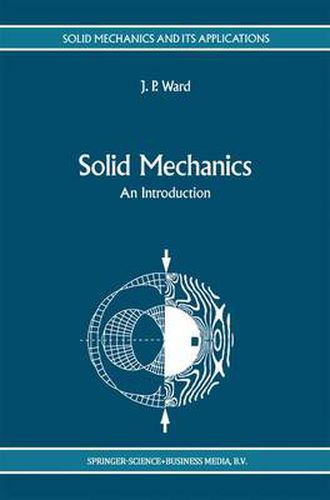Readings Newsletter
Become a Readings Member to make your shopping experience even easier.
Sign in or sign up for free!
You’re not far away from qualifying for FREE standard shipping within Australia
You’ve qualified for FREE standard shipping within Australia
The cart is loading…






This title is printed to order. This book may have been self-published. If so, we cannot guarantee the quality of the content. In the main most books will have gone through the editing process however some may not. We therefore suggest that you be aware of this before ordering this book. If in doubt check either the author or publisher’s details as we are unable to accept any returns unless they are faulty. Please contact us if you have any questions.
This book is a concise and readable introductory text on solid mechanics suitable for engineers, scientists and applied mathematicians. It presents the foundations of stress, strain and elasticity theory and consistently employs the use of vectors and (particularly) Cartesian tensor notation. The first chapter introduces vectors with particular emphasis being paid to applications which arise in later chapters. Chapter 2 introduces Cartesian tensors and describes some of their important applications. In particular, finite and infinitessimal rotations are examined as are isotropic tensors and second order symmetric tensors. The last topic of this chapter includes a full discussion on eigenvalues and eigenvectors. There are separate introductions, in Chapters 3 and 4, to stress and strain and to their practical measurement using, respectively, photoelastic methods and strain gauges. In Chapter 5 the concepts of stress and strain are brought together and, in conjunction with Newton’s equilibrium equations, used to deduce the basic equations of linear elasticity theory. These fundamental equations are then examined and analyzed by obtaining simple exact solutions, including solutions which describe twisting, bending and stretching of beams. Chapter 6 introduces the fundamental concept of strain energy and uses this concept to derive the Kirchoff uniqueness theorem, Rayleigh’s reciprocal theorem and the important Castigliano relations. The chapter concludes with a thorough treatment of the theorem of minimum potential energy and examines some of its applications. The final three chapters examine the application of the fundamental equations to the theory of torsion, to structural analysis and to the treatment of two dimensional elastostatics by analytical and approximate (finite element) methods.
$9.00 standard shipping within Australia
FREE standard shipping within Australia for orders over $100.00
Express & International shipping calculated at checkout
This title is printed to order. This book may have been self-published. If so, we cannot guarantee the quality of the content. In the main most books will have gone through the editing process however some may not. We therefore suggest that you be aware of this before ordering this book. If in doubt check either the author or publisher’s details as we are unable to accept any returns unless they are faulty. Please contact us if you have any questions.
This book is a concise and readable introductory text on solid mechanics suitable for engineers, scientists and applied mathematicians. It presents the foundations of stress, strain and elasticity theory and consistently employs the use of vectors and (particularly) Cartesian tensor notation. The first chapter introduces vectors with particular emphasis being paid to applications which arise in later chapters. Chapter 2 introduces Cartesian tensors and describes some of their important applications. In particular, finite and infinitessimal rotations are examined as are isotropic tensors and second order symmetric tensors. The last topic of this chapter includes a full discussion on eigenvalues and eigenvectors. There are separate introductions, in Chapters 3 and 4, to stress and strain and to their practical measurement using, respectively, photoelastic methods and strain gauges. In Chapter 5 the concepts of stress and strain are brought together and, in conjunction with Newton’s equilibrium equations, used to deduce the basic equations of linear elasticity theory. These fundamental equations are then examined and analyzed by obtaining simple exact solutions, including solutions which describe twisting, bending and stretching of beams. Chapter 6 introduces the fundamental concept of strain energy and uses this concept to derive the Kirchoff uniqueness theorem, Rayleigh’s reciprocal theorem and the important Castigliano relations. The chapter concludes with a thorough treatment of the theorem of minimum potential energy and examines some of its applications. The final three chapters examine the application of the fundamental equations to the theory of torsion, to structural analysis and to the treatment of two dimensional elastostatics by analytical and approximate (finite element) methods.